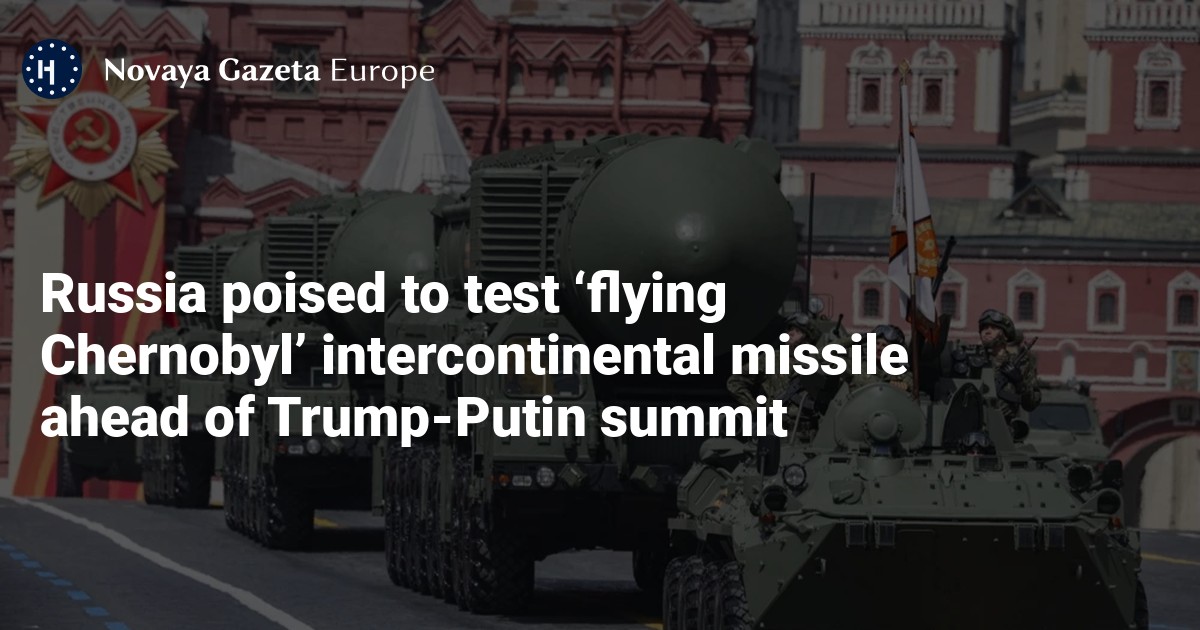




Russian Yars intercontinental ballistic missile launchers take part in the Victory Day military parade in Moscow on 9 May 2025. EPA/MAXIM SHIPENKOV
As US President Donald Trump and Vladimir Putin prepare for their much-anticipated summit in the Alaskan city of Anchorage on Friday, it appears that their respective administrations are taking two very different approaches to the negotiations, which the US is hoping will pave the way to a ceasefire declaration in Ukraine and a much-needed foreign policy win for Trump.
According to The Telegraph, Trump’s advisers are planning to present Putin with a number of lucrative business opportunities that include “opening up Alaska’s natural resources to Moscow and lifting some of the American sanctions on Russia’s aviation industry.”
Among the other incentives being prepared to encourage Moscow to the negotiating table are “giving Putin access to the rare earth minerals in the Ukrainian territories currently occupied by Russia”, The Telegraph added.
If true, Trump casually trading Ukrainian sovereignty is likely to infuriate Ukrainian President Volodymyr Zelensky and his European allies, who appeared to be cautiously optimistic after a video call with Trump on Wednesday in which the US president agreed to prioritise Ukraine’s interests when he meets Putin.
For its part, the Kremlin appears to be favouring the stick over the carrot, and, according to two US researchers and an unnamed Western security source who spoke to Reuters, seems to be planning to test its new nuclear-armed, nuclear-powered cruise missile, the 9M730 Burevestnik, ahead of the Alaska talks, potentially overshadowing the negotiations before they even begin.
According to Reuters, Jeffrey Lewis of the Middlebury Institute of International Studies in California and Decker Eveleth of the Virginia-based CNA research and analysis organisation have both come to the conclusion that Russia is planning a missile test “by studying imagery taken in recent weeks until Tuesday by Planet Labs, a commercial satellite firm”.
Lewis and Eveleth both interpreted the “extensive activity” visible on satellite images of the Pankovo test site on the Arctic Russian island of Novaya Zemlya as being consistent with that seen in the run up to earlier tests of the 9M730 Burevestnik, Reuters reported, adding that a Western security analyst who spoke on condition of anonymity had also confirmed the pair’s findings.
“We can see all of the activity at the test site, which is both huge amounts of supplies coming in to support operations and movement at the place where they actually launch the missile,” Lewis said.
Both researchers began studying satellite images of Novaya Zemlya after Russia issued a warning to maritime transport and civil aviation not to enter the area around the island between 9–12 August. The Barents Observer, an independent Norwegian publication, also reported that the Russian military closed the airspace over a 500-kilometre zone along Novaya Zemlya’s west coast from August 7–12.
Putin has described the 9M730 Burevestnik, which has an almost unlimited range and uses unpredictable flight paths, as being “invincible”, and as the missile is believed to be significantly smaller than other Russian intercontinental missiles, and its reactor requires relatively little fuel to function, the space saved can be used instead for a significantly sized warhead.
However, according to Reuters, only two of the 13 known test launches of the missile have been successful, leading US experts to dub the Burevestnik a “flying Chernobyl”.
